Related Research Articles

Philip Kindred Dick, often referred to by his initials PKD, was an American science fiction writer. He wrote 44 novels and about 121 short stories, most of which appeared in science fiction magazines during his lifetime. His fiction explored varied philosophical and social questions such as the nature of reality, perception, human nature, and identity, and commonly featured characters struggling against elements such as alternate realities, illusory environments, monopolistic corporations, drug abuse, authoritarian governments, and altered states of consciousness.
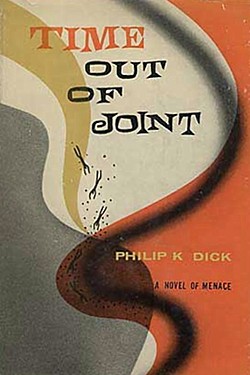
Time Out of Joint is a dystopian novel by American writer Philip K. Dick, first published in novel form in the United States in 1959. An abridged version was also serialised in the British science fiction magazine New Worlds Science Fiction in several installments from December 1959 to February 1960.
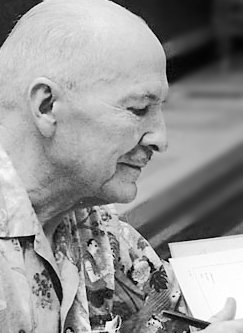
Robert Anson Heinlein was an American science fiction author, aeronautical engineer, and naval officer. Sometimes called the "dean of science fiction writers", he was among the first to emphasize scientific accuracy in his fiction, and was thus a pioneer of the subgenre of hard science fiction. His published works, both fiction and non-fiction, express admiration for competence and emphasize the value of critical thinking. His plots often posed provocative situations which challenged conventional social mores. His work continues to have an influence on the science-fiction genre, and on modern culture more generally.
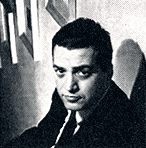
Alfred Bester was an American science fiction author, TV and radio scriptwriter, magazine editor and scripter for comic strips and comic books. He is best remembered for his science fiction, including The Demolished Man, winner of the inaugural Hugo Award in 1953.

The Man Who Sold the Moon is the title of a 1950 collection of science fiction short stories by American writer Robert A. Heinlein.

Philip José Farmer was an American author known for his science fiction and fantasy novels and short stories.
Orphans of the Sky is a science fiction novel by American writer Robert A. Heinlein, consisting of two parts: "Universe" and its sequel, "Common Sense". The two novellas were first published together in book form in 1963. "Universe" was also published separately in 1951 as a 10¢ Dell paperback. The work presents one of the earliest fictional depictions of a generation ship.

Gene Rodman Wolfe was an American science fiction and fantasy writer. He was noted for his dense, allusive prose as well as the strong influence of his Catholic faith. He was a prolific short story writer and novelist, and won many literary awards. Wolfe has been called "the Melville of science fiction", and was honored as a Grand Master by the Science Fiction and Fantasy Writers of America.
A parallel universe, also known as a parallel dimension, alternate universe, or alternate reality, is a hypothetical self-contained plane of existence, co-existing with one's own. The sum of all potential parallel universes that constitute reality is often called a "multiverse".
George Edgar Slusser was an American scholar, professor and writer. Slusser was a well-known science fiction critic. A professor emeritus of comparative literature at University of California, Riverside, he was the first curator of the Eaton collection.
Bradford Swain Linaweaver was an American science fiction writer, film producer, actor, and magazine publisher. Over a 40-year career, he completed a body of work including novels, short stories, and screenplays.

An extraterrestrial or alien is any extraterrestrial lifeform; a lifeform that did not originate on Earth. The word extraterrestrial means "outside Earth". The first published use of extraterrestrial as a noun occurred in 1956, during the Golden Age of Science Fiction.

The Moon has appeared in fiction as a setting since at least classical antiquity. Throughout most of literary history, a significant portion of works depicting lunar voyages has been satirical in nature. From the late 1800s onwards, science fiction has successively focused largely on the themes of life on the Moon, first Moon landings, and lunar colonization.
The first Golden Age of Science Fiction, often recognized in the United States as the period from 1938 to 1946, was an era during which the science fiction genre gained wide public attention and many classic science fiction stories were published. In the history of science fiction, the Golden Age follows the "pulp era" of the 1920s and 1930s, and precedes New Wave science fiction of the 1960s and 1970s. The 1950s are a transitional period in this scheme; however, Robert Silverberg, who came of age in the 1950s, saw that decade as the true Golden Age.
The science fiction writer Robert A. Heinlein (1907–1988) was productive during a writing career that spanned the last 49 years of his life; the Robert A. Heinlein bibliography includes 32 novels, 59 short stories and 16 collections published during his life. Four films, two TV series, several episodes of a radio series, at least two songs and a board game derive more or less directly from his work. He wrote a screenplay for one of the films. Heinlein edited an anthology of other writers' science fiction short stories.
Francis Marion Busby was an American science fiction writer and science fiction fan. In 1960 he was a co-winner of the Hugo Award for Best Fanzine.
Paranoid fiction is a term sometimes used to describe works of literature that explore the subjective nature of reality and how it can be manipulated by forces in power. These forces can be external, such as a totalitarian government, or they can be internal, such as a character's mental illness or refusal to accept the harshness of the world they are in.
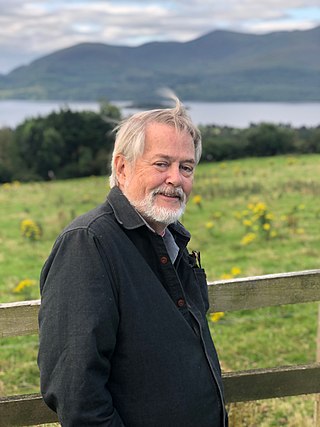
Gary K. Wolfe is an American science fiction editor, critic and biographer. He is an emeritus Professor of Humanities in Roosevelt University's Evelyn T. Stone College of Professional Studies.

Typewriter in the Sky is a science fantasy novel by American writer L. Ron Hubbard. The protagonist Mike de Wolf finds himself inside the story of his friend Horace Hackett's book. He must survive conflict on the high seas in the Caribbean during the 17th century, before eventually returning to his native New York City. Each time a significant event occurs to the protagonist in the story he hears the sounds of a typewriter in the sky. At the story's conclusion, de Wolf wonders if he is still a character in someone else's story. The work was first published in a two-part serial format in 1940 in Unknown Fantasy Fiction. It was twice published as a combined book with Hubbard's work Fear. In 1995 Bridge Publications re-released the work along with an audio edition.
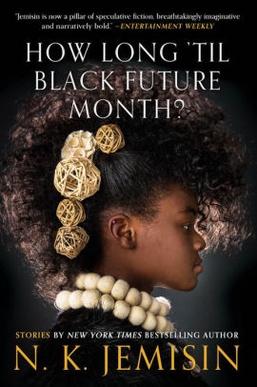
How Long 'til Black Future Month? is a collection of science fiction and fantasy short stories by American novelist N. K. Jemisin. The book was published in November 2018 by Orbit Books, an imprint of the Hachette Book Group. The name of the collection comes from an Afrofuturism essay that Jemisin wrote in 2013. Four of the 22 stories included in the book had not been previously published; the others, written between 2004 and 2017, had been originally published in speculative fiction magazines and other short story collections. The settings for three of the stories were developed into full-length novels after their original publication: The Killing Moon, The Fifth Season, and The City We Became.
References
- ↑ Chalker, Jack L.; Mark Owings (1998). The Science-Fantasy Publishers: A Bibliographic History, 1923–1998. Westminster, MD and Baltimore: Mirage Press, Ltd. p. 308.
- ↑ The Heritage of Heinlein: A Critical Reading of the Fiction, by Thomas D. Clareson and Joe Sanders; p. 45; published January 23, 2014 by McFarland & Company
- ↑ Evaporating Genre: Strategies of Dissolution in the Postmodern Fantastic", by Gary K. Wolfe, in Edging Into the Future: Science Fiction and Contemporary Cultural Transformation, edited by Veronica Hollinger and Joan Gordon; published 2002 by University of Pennsylvania Press